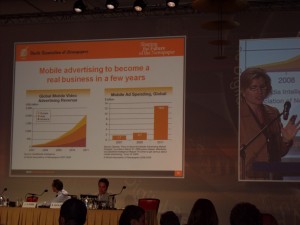In the last session of the WAN/World Editors Forum 11th Readership Conference the speakers looked at shaping the future of the newspaper (information courtesy of WAN conference updates).
While Karen Wall, assistant managing director of Metro in the UK, focussed on good old print, arguing that the free newspaper model was growing, Christian Ortner the editor-in-chief of the regional newspaper Vorarlberger Nachrichten, in Austria, took the WAN audience through his newspaper’s decision to become the ‘Yahoo for local search’ in their area.
“Today Google has taken over search,” said Ortner. “Down to the small restaurant, Google is serving the local market.”
But he believes that “what happened in search need not happen for local news, services, parties, classifieds, restaurants, videos and other content.”
Vorarlberger Nachrichten Online is now aggressively pursuing online opportunities, forecasting that half its revenue will come from its digital platforms by 2011.
Here’s what the paper is developing, as told by Ortner:
- 17 citizen forums, which connect active citizens at the community level. “Politicians and journalists are also members of the list. The citizens’ ideas are picked up by the newspaper reporters, who try to communicate and solve the problems. VN now generates thousands of new and dedicated ‘freelance journalists.'”
- ‘MyVillage’ hyperlocal websites, which deliver fresh and useful information to the users about their immediate neighbourhoods. The strategy for the online platform calls for lots of micro-sites on niche topics.
- Video, video, video, from a variety of sources – local reporters, news agencies and the users themselves. “What works for YouTube can also be successful locally.”
- A ‘mobile journalist’ team covering breaking news, with videos and photos. The ‘mojos’ focus on ordinary people and local stories.
- A multi-brand strategy that focuses on target groups: “We believe the online upside is greater than the print downside.”
